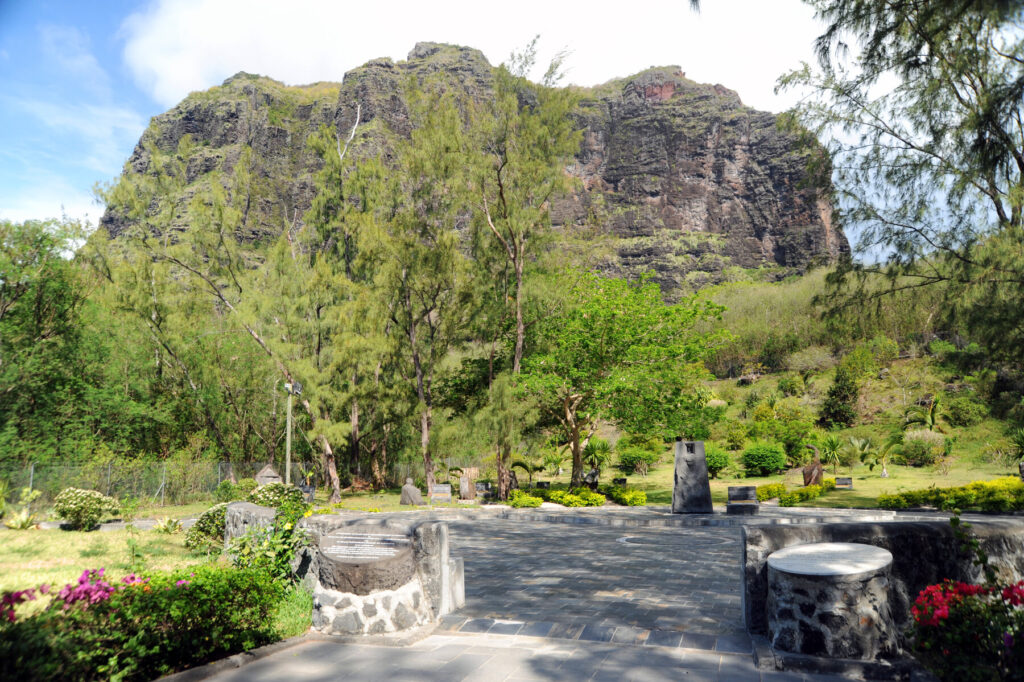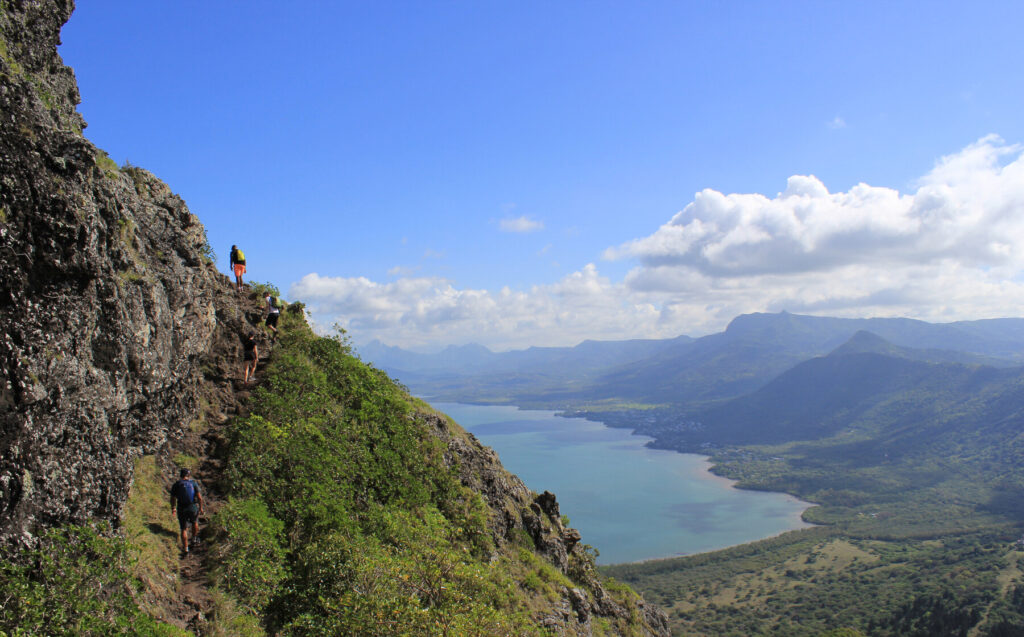Le Morne is probably the most recognisable landmark in Mauritius, so it is no surprise that it is home to one of the island’s most popular hikes. At just over 550m above sea level, it offers breathtaking views for those who reach the summit. But its natural beauty belies a more tragic past.
The history
I set off early with Dirk, a fabulous guide from Yanature, a very professional outfit who have been running expert-led guided hikes of Le Morne for many years. Dirk’s passion for Mauritius and the outdoors shines through as he recites the history of the area.
The Le Morne peninsula and its various caves served as a refuge for runaway slaves (known as marrons) during the 19th century. It is said that after slavery was abolished on 1 February 1835, the government at the time sent an expedition team of police and soldiers to inform the marrons living on Le Morne that they were now free. They were dressed in uniform and carrying guns, so the marrons feared they would be captured and returned to slavery. Not wishing to be condemned to that life again, they instead chose to end their lives by jumping from the summit. They faced Africa, their homeland, as they jumped and a sadness haunts the mountain still.
In 2003, archaeologists, anthropologists and historians undertook field work to establish if this legend is true. Three caves were identified, with evidence of human habitation. Although the lack of any permanent source of fresh water on the mountain makes sustained human habitation on the summit unlikely, historical literature and oral testimonies alike attest to slaves having settled on the plateau of the Le Morne Peninsula, where they cultivated crops and raised goats.

A community for freed slaves was set up at the southern foot of Le Morne but was later moved to the present location of Le Morne village. Their descendants still live there today and have always regarded Le Morne, which came to symbolise the suffering of the island’s slaves, as sacred.
In 2008, Le Morne was declared a UNESCO World Heritage Site and the following year, on 1 February (the 174th anniversary of the abolition of slavery), UNESCO unveiled a memorial at its foot as part of its Slave Route Project: the International Slave Route Monument. At its centre is a black granite block engraved with the image of a slave, around which are a series of stones and sculptures symbolising the countries from which the slaves came. In front of the memorial is inscribed, in Creole, French and English, a verse of the poem ‘Le Morne. Territoire Marron!’ by Sedley Assone.
The hike
The hike itself takes around 3–4 hours, which allows for plenty of rest and photo stops. The first section is mainly along a 4×4 access track which, although steep, is easy going. As you wander through the forest you start to catch glimpses of the beautiful turquoise waters of the lagoon below. Dirk explained that Le Morne is home to a wide variety of endemic species, such as the Trochetia boutoniana, the floral emblem of Mauritius. Owing to the introduction of monkeys, who eat the flower buds, this rare plant is now only found on the steep slopes of Le Morne.

Arriving at the halfway point, you are greeted with magnificent views north to Black River, the mountains of Chamarel and the beautiful southern coastline. From here, the true ascent starts. Gone is the groomed road; instead there is a goat track. Sections of this climb will have you scrambling over rocks and pushing through vegetation, but the views are worth every step, slip and scratch.
As you scramble over the last rock, you will see a giant cross facing out to the ocean. It marks the highest accessible point, and is a memorial to the those who lost their lives on this majestic mountain. There isn’t a great deal of room on the summit, so you do need to take care.
From here, it is impossible to know where to look first. You can see the stunning Le Morne lagoon with its patchwork of coral reefs, the glowing white sandy beaches surrounding the peninsula, and the famous optical illusion known as the underwater waterfall. The illusion is caused by trails of sand on the sea floor being dragged away by water going through the opening in the coral reef and is quite the sight to behold.
Practicalities
Le Morne is no Mount Everest, but it is no easy walk along a tropical beach either. You will need a good level of fitness to reach the summit, but even if you only reach the halfway point, it is still worth it. You will need to come prepared with hiking boots, or a good pair of trainers, plenty of water and suncream. There is very little shade on the summit, so it is best to set off in the morning but you can bet that the early alarm will be worth it.
Guided hikes depart around 06.00 in the summer (November to March) and 07.00 in winter (April to October). Advance booking is essential.
More information
For more information on Mauritius, check out Alexandra Richards’s guide:
